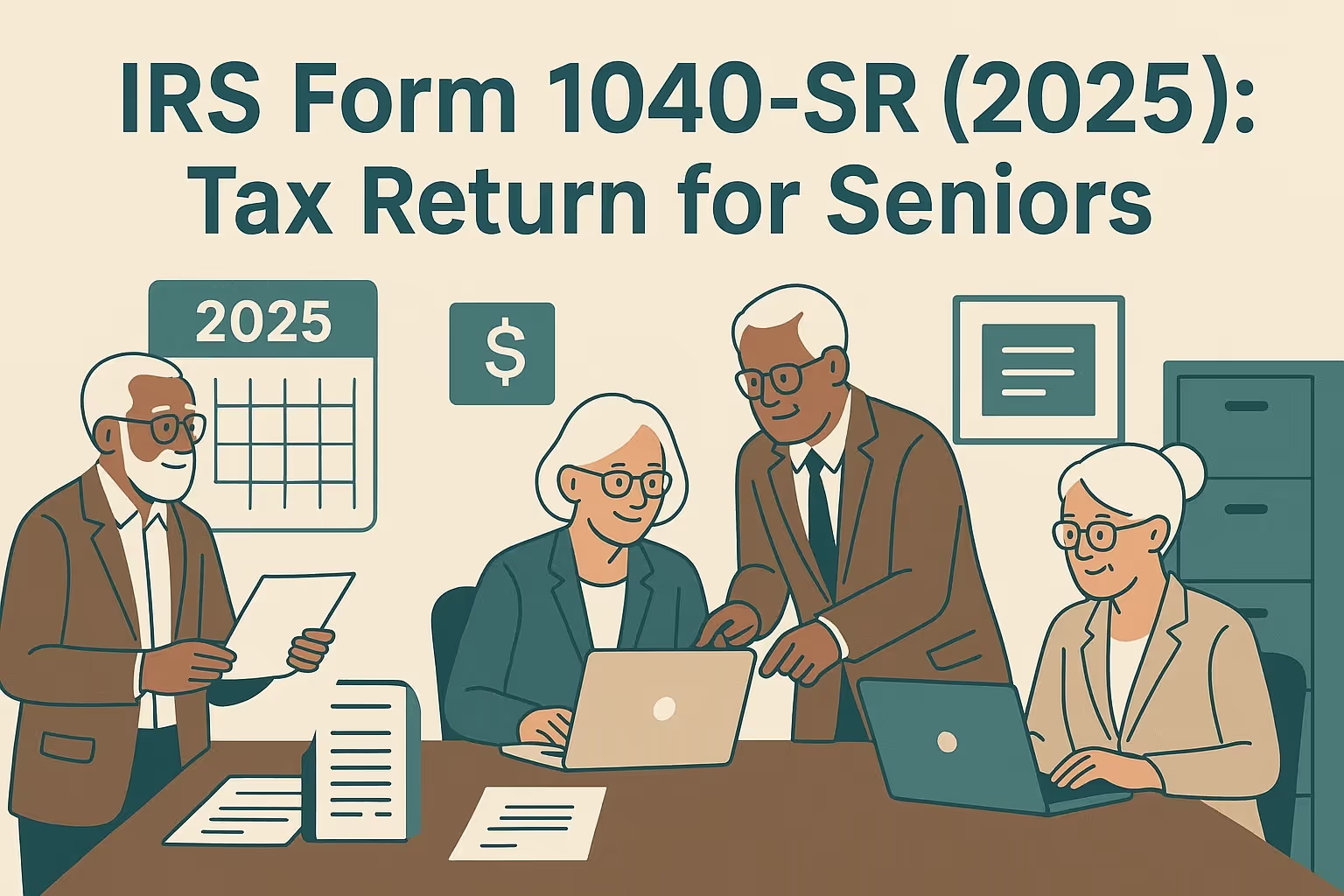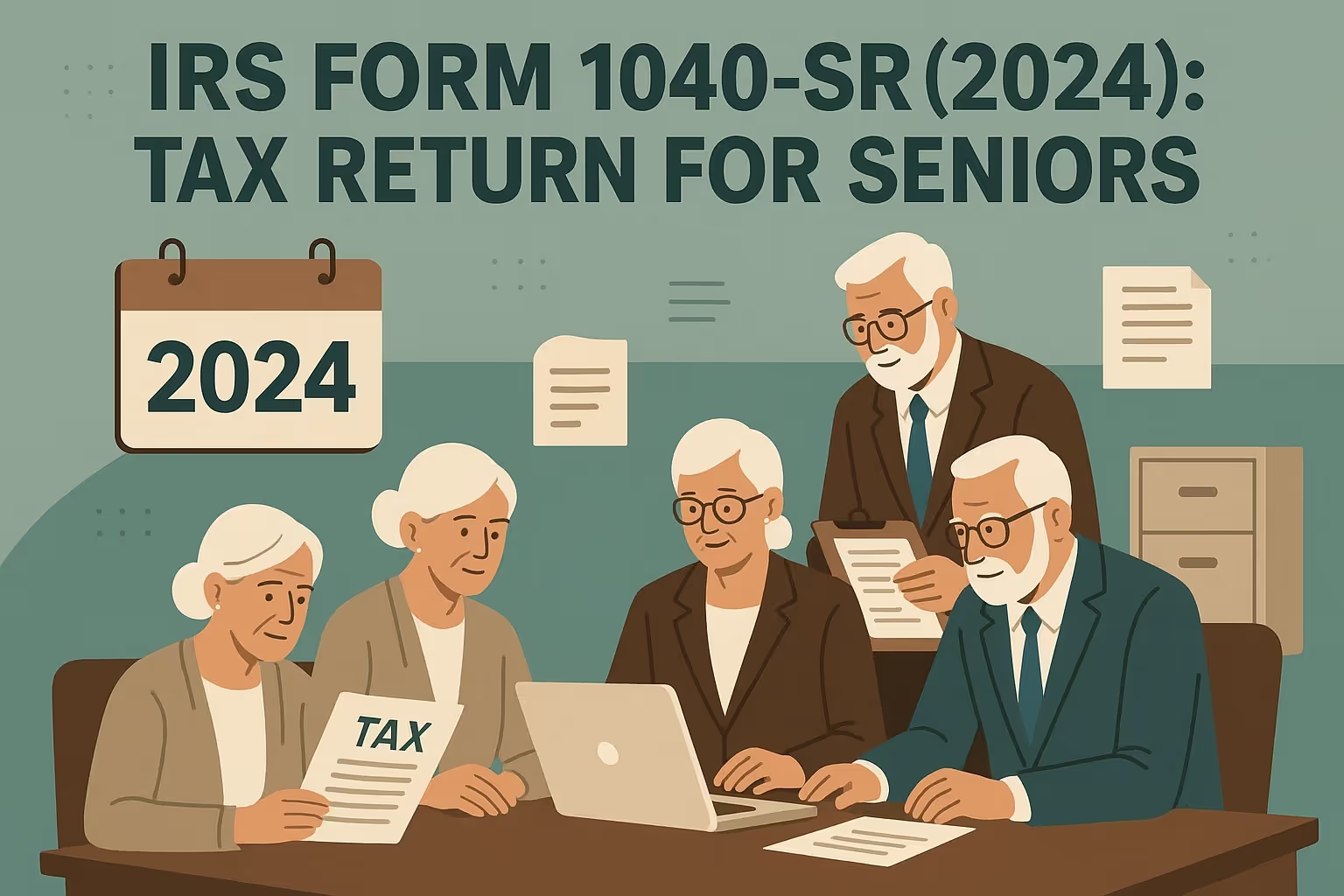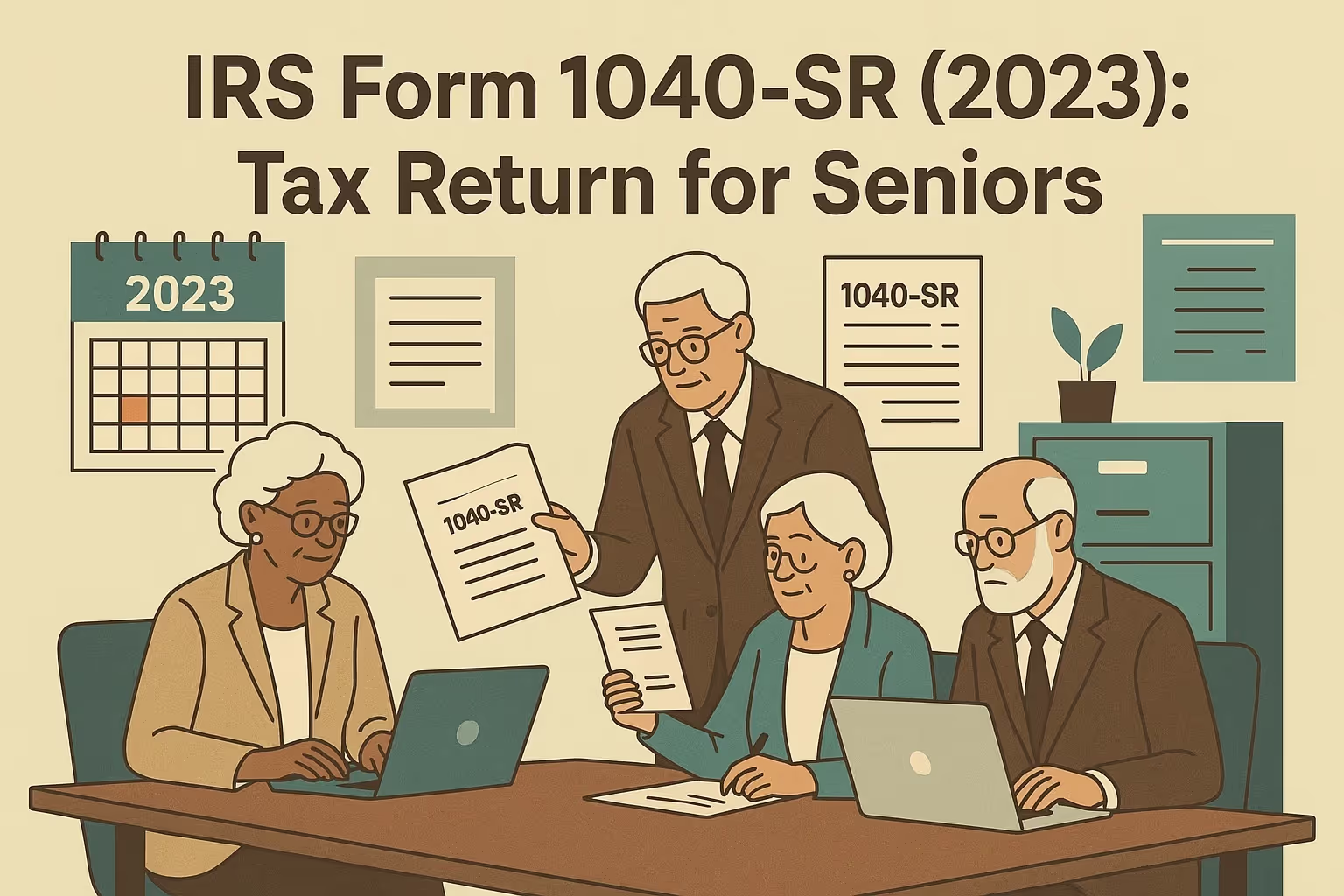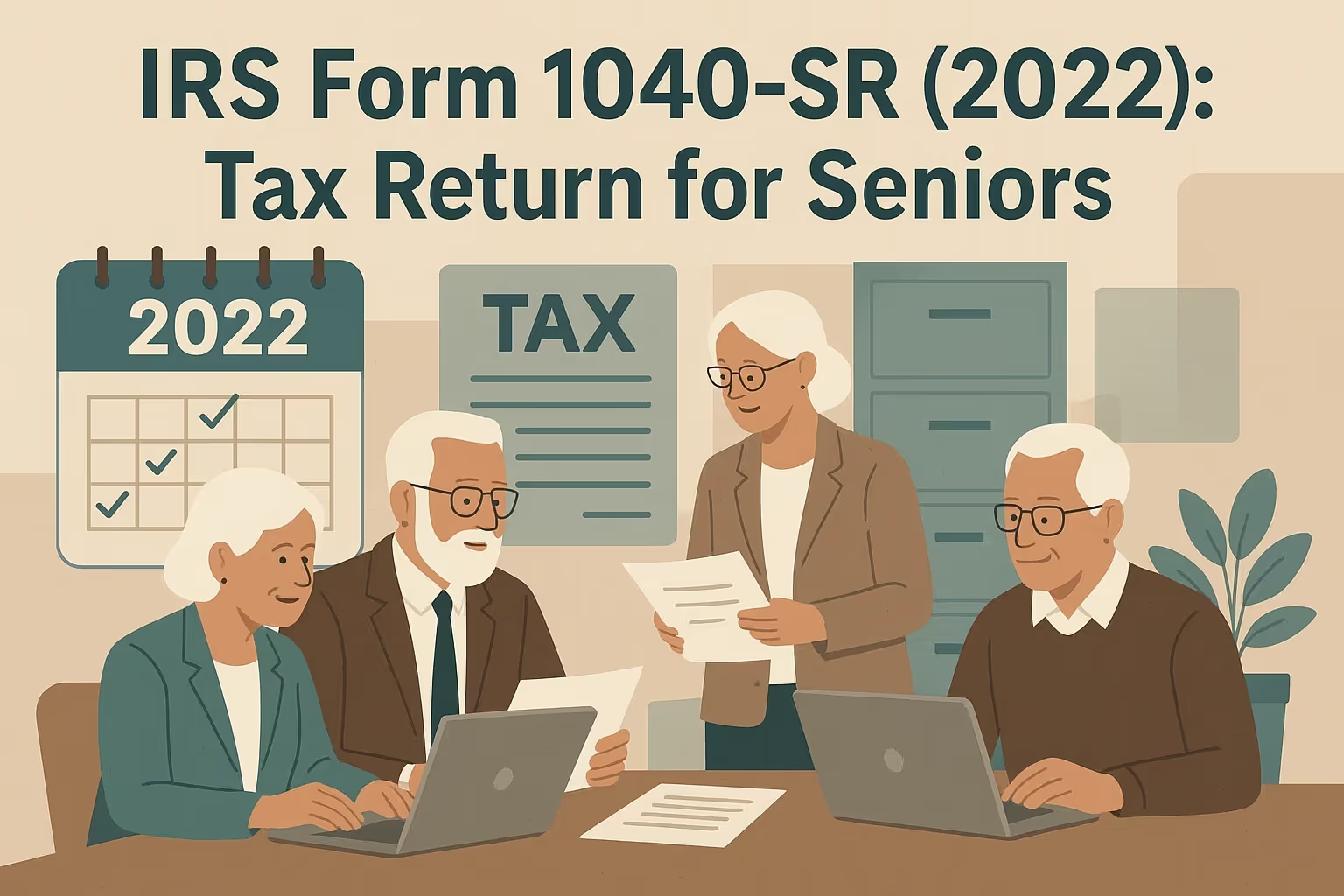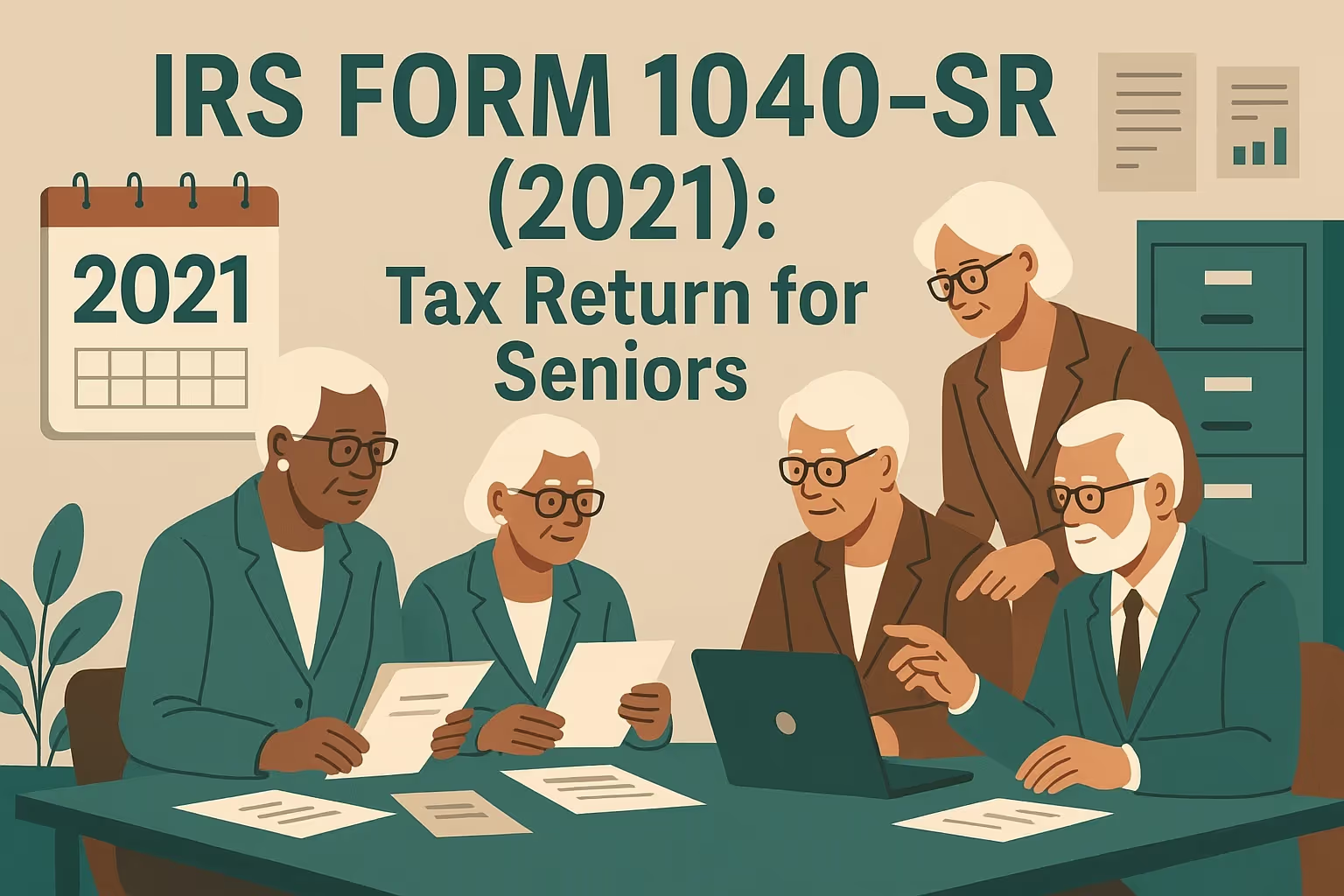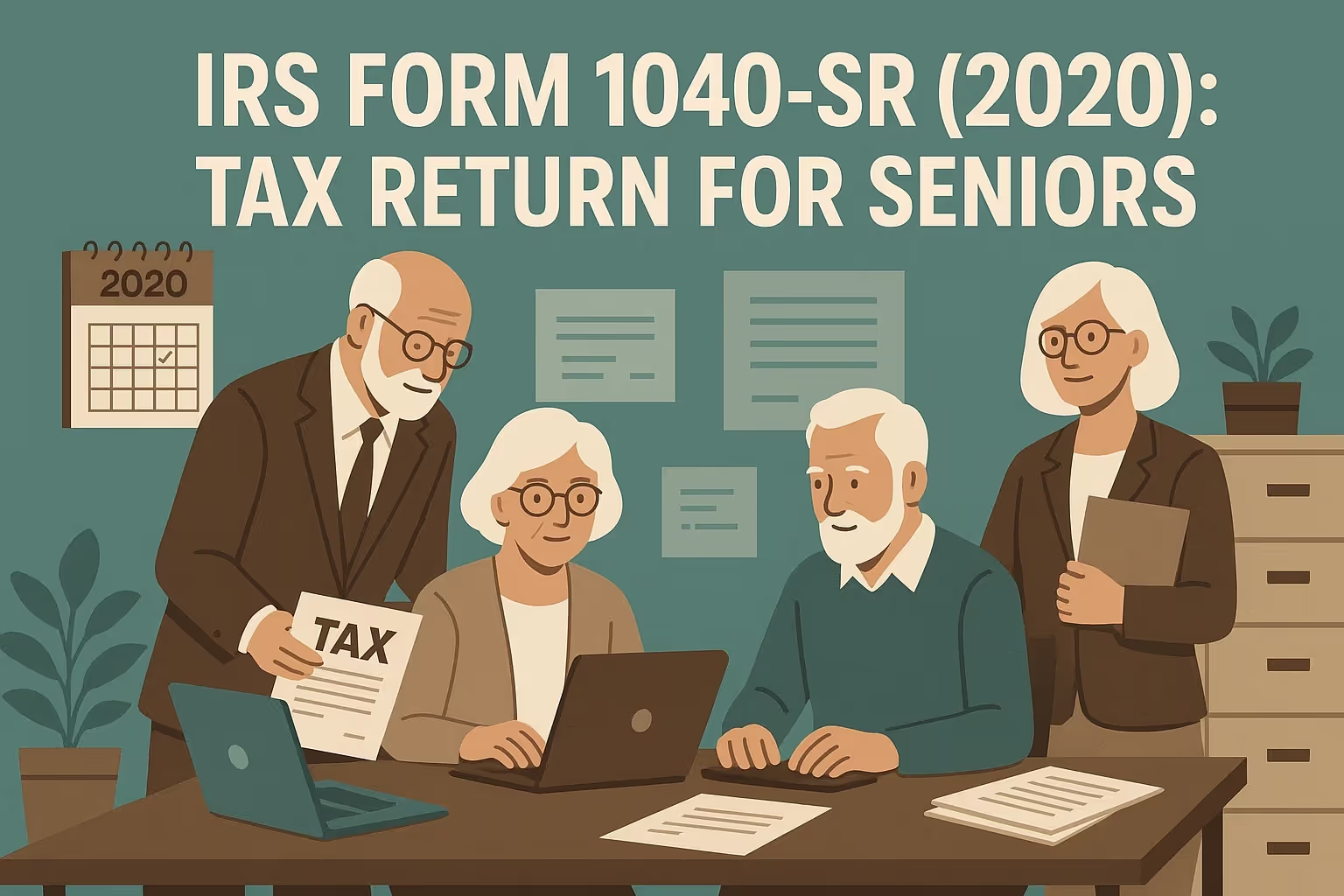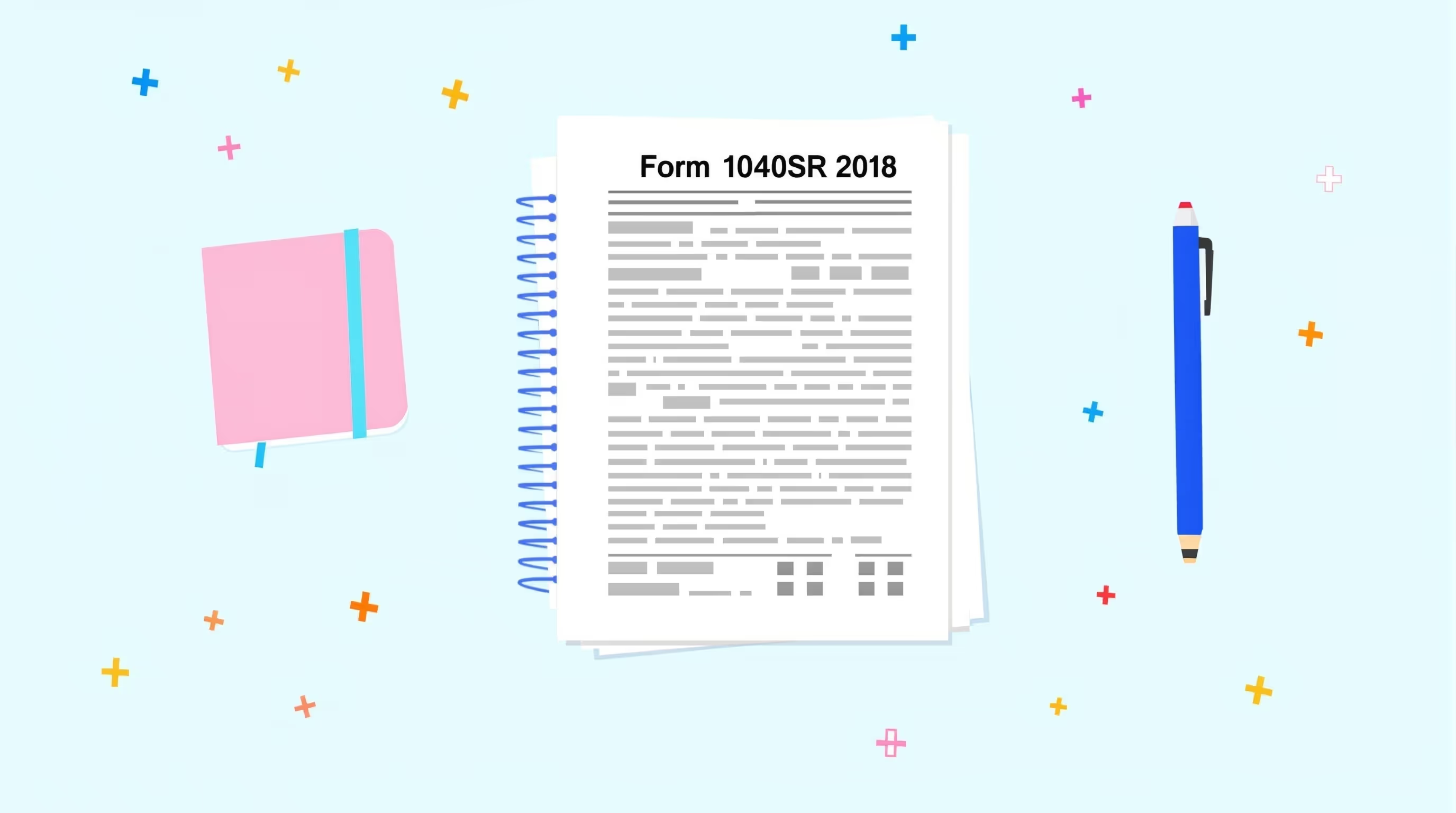IRS Form 1040-SR (2019): Tax Return for Seniors
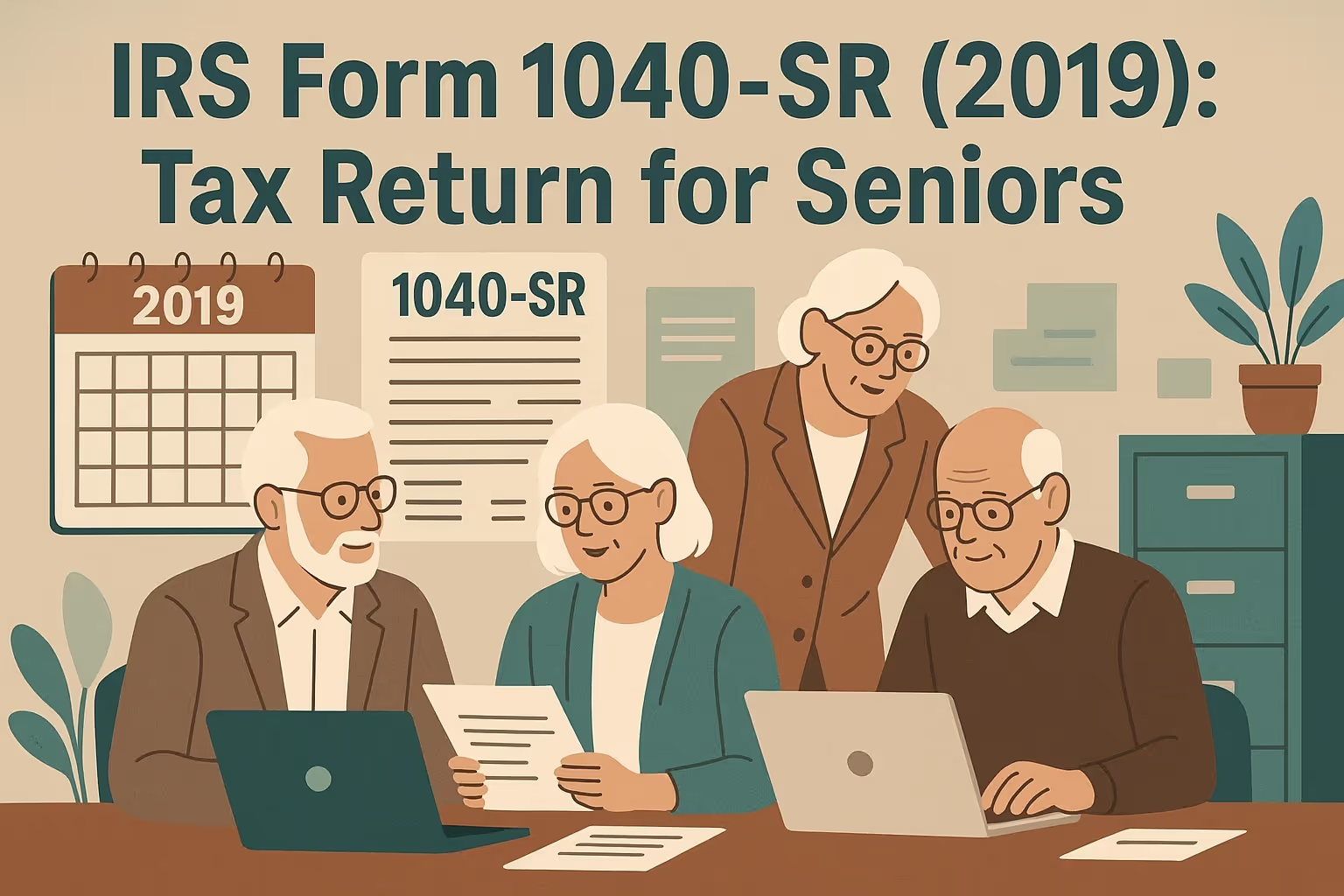
What IRS Form 1040-SR (2019) Is For
IRS Form 1040-SR (2019) is a version of the federal income tax return explicitly designed for older adults and retirees who were 65 and older at the end of the 2019 tax year. The form performs the same income tax calculations as the standard IRS Form 1040, but it is referred to as a simplified version for qualifying taxpayers. It features larger text, a locked padlock icon for secure identification, and a cleaner layout that facilitates easier filing for older Americans.
This form enables taxpayers and their spouses to claim all eligible tax deductions, tax credits, and benefits, utilizing a senior-friendly design. Seniors may file either Form 1040-SR or the regular Form 1040, as both determine federal income tax liability under existing law and the current additional standard deduction rules.
When You’d Use Form 1040-SR for 2019 (Late or Amended Filing)
You should file Form 1040-SR (2019) if you never submitted your 2019 tax return, received an IRS notice, or need to correct incorrect information. The refund statute for this tax year expired on July 17, 2023, but filing still provides relief from penalties and interest. Filing ensures your income, deductions, and credits are correctly shown and that you meet your legal filing requirements.
Even if you no longer qualify for a refund, filing now helps older individuals stop additional penalties from increasing. Many retirees receive Social Security or other forms of income, and a missing return may impact their benefits or eligibility for state-level assistance programs.
Key Rules Specific to the 2019 Tax Year
- The standard deduction for seniors age 65 and older was $13,850 for single filers, $25,700 for married filing jointly (or $27,000 if both spouses qualify), and $20,000 for head of household.
- The new senior deduction, which began in 2019, offered an extra standard deduction for every qualifying individual who met the age requirement.
- Itemized deductions for property taxes, mortgage interest, and personal use expenses were still allowed under existing law, although many taxpayers benefited more from claiming the standard deduction.
- The 2019 tax year marked the first year that Form 1040-SR was made available to older adults under a new deduction layout and simplified criteria.
- Refunds for 2019 returns could not be claimed after July 17, 2023, since the refund phase-out period ended.
Browse more tax form instructions and filing guides in our Forms Hub.
Step-by-Step: Filing Form 1040-SR (High Level)
- Gather records: Collect all W-2s, 1099s, and Social Security Administration forms showing your income for the 2019 tax year. Verify totals, including modified adjusted gross income (MAGI), to determine if you qualify for specific tax deductions or credits.
- Complete the correct form: Use the IRS Form 1040-SR 2019 version, which includes larger print, boxes for filing status, and an additional deduction chart designed for seniors.
- Attach required schedules: Include Schedules 1, 2, or 3 if you claim extra tax credits, deductions, or adjustments to income. This may include education credits or energy credits for household use.
- Determine filing method: You can file electronically or by mail. If filing on paper, check that the year shown at the top is 2019. Older taxpayers who file by mail should include all required forms in one return envelope.
- Keep records: Retain all forms, proofs of mailing, and receipts for at least three years for personal and IRS reference. Keeping records helps if a person later needs to create an amended return or verify income for state relief programs.
Learn more about federal tax filing through our IRS Form Help Center.
Common Mistakes and How to Avoid Them
- Using the wrong year’s form: Always download the 2019 version of Form 1040-SR from the IRS website before you file to ensure all lines match that year’s rules.
- Applying incorrect standard deductions: Review the 2019 deduction thresholds to avoid using reduced or updated numbers from another year.
- Incorrect Social Security numbers: Double-check every box for your number and your spouse’s before submitting the return.
- Miscalculating taxable Social Security income: Use the IRS worksheet provided in the 2019 instructions to correctly determine how much of your Social Security income is taxable.
- Leaving the return unsigned: If you are married and filing jointly, both spouses are required to sign; otherwise, the IRS will return the form as incomplete.
- Switching between forms: Choose either Form 1040-SR or Form 1040 and stick with it throughout the process to prevent errors that affect your totals.
Learn more about how to avoid business tax problems in our guide on How to File and Avoid Penalties.
FAQs
Can I still receive a refund for my 2019 taxes if I file my return after the due date?
No, the refund period for the 2019 tax year closed on July 17, 2023. While you cannot claim a refund, you should still file to show compliance and stop penalties.
What penalties apply for filing my 2019 return late?
The failure-to-file penalty is 5% of the unpaid tax per month, up to a maximum of 25% per year. The failure-to-pay penalty adds 0.5% interest monthly. Filing now helps reduce the impact of these fees on your balance.
Should I file Form 1040-SR or the regular Form 1040?
Both forms are valid. Form 1040-SR is designed for seniors and includes the One Big Beautiful Bill layout, a larger text, and the new deduction chart. The standard Form 1040 works similarly but lacks the senior layout.
Do I also need to file a state return?
Yes, in most cases, you do. States usually base their income tax on federal adjusted gross income, so amending your federal return may require a state filing. Check your state tax agency website for details.
Can I get IRS transcripts for 2019?
Yes, you can receive transcripts through the IRS Get Transcript service. They show what income and tax information the IRS has on file, helping you verify totals before filing or itemizing deductions.
For more resources on filing or understanding prior-year IRS forms, visit our guide on Individual Tax Forms.
















